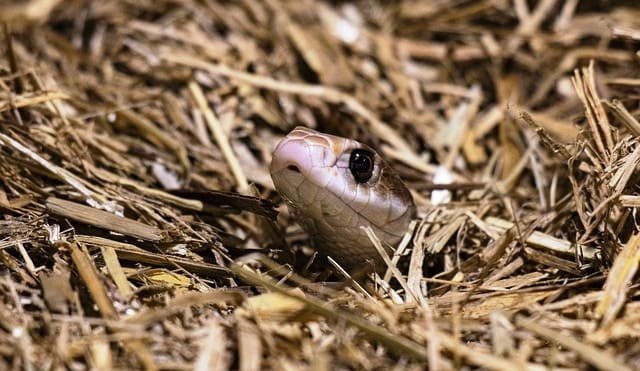Most Dangerous Snakes In The World
When it comes to the most dangerous snakes in the world, several species stand out for their potency and threat to humans. The Inland Taipan, often called the “fierce snake,” tops the list due to its incredibly toxic venom, though it’s rarely encountered. The Black Mamba, known for its speed and neurotoxic venom, can deliver a lethal bite if untreated. The King Cobra, the world’s longest venomous snake, combines size with a powerful neurotoxin. Finally, the Saw-Scaled Viper is notorious for causing numerous fatalities due to its aggressive nature and hemotoxic venom. Each of these snakes poses significant risks, highlighting the importance of awareness and safety.

1. Venomous Snake Figures in the World
Total Number of Venomous Snake Species
- Approximately 600 venomous snake species exist out of around 3,000 known snake species. This means about 20% of all snake species are venomous.
Types of Snake Venom
Snake venom can be categorized into three primary types based on its effects on the human body: neurotoxic, hemotoxic, and cytotoxic.
Highly venomous snakes are a diverse group, encompassing species from various families such as Elapidae (cobras, mambas, and sea snakes), Viperidae (vipers and pit vipers), and Atractaspididae (burrowing asps). Notable highly venomous snakes include:
| Name | Scientific Name | Venom Type | Effects on Human Body |
|---|---|---|---|
| King Cobra | Ophiophagus hannah | Neurotoxic | Respiratory failure, paralysis, severe pain |
| Black Mamba | Dendroaspis polylepis | Neurotoxic | Rapid paralysis, dizziness, respiratory failure |
| Inland Taipan | Oxyuranus microlepidotus | Neurotoxic | Muscle damage, internal bleeding, kidney failure |
| Russell’s Viper | Daboia russelii | Hemotoxic | Severe bleeding, organ damage, intense pain |
| Saw-Scaled Viper | Echis carinatus | Hemotoxic | Coagulation disorders, kidney damage, hemorrhage |
2. Venomous Snake Bite Cases Worldwide
Globally, snake bites are a significant public health issue, with millions of cases reported annually. According to the World Health Organization (WHO), approximately 5.4 million snake bites occur each year, resulting in around 2.7 million envenomings.
3. Venomous Snake Death Cases Worldwide
Tragically, venomous snake bites lead to a substantial number of fatalities. It’s estimated that between 81,000 and 138,000 people die each year from snake bites worldwide. Many more suffer from permanent disabilities and disfigurements due to delayed or inadequate treatment.
4. Most Death Cases Worldwide: Which Snake?
Among the highly venomous snakes, the Saw-Scaled Viper (Echis carinatus) is responsible for the most deaths globally. Despite its small size, its aggressive nature and potent venom make it one of the deadliest snakes.
5. Venomous Snakes in India: The Big Four
Below is a table listing the “Big Four” venomous snakes in India, along with their scientific names, venom types, and the effects of their venom on the human body.
| Snake Name | Scientific Name | Venom Type | Venom Effects on Human Body |
|---|---|---|---|
| Indian Cobra | Naja naja | Neurotoxic | Paralysis, respiratory failure, severe pain |
| Russell’s Viper | Daboia russelii | Hemotoxic | Severe bleeding, organ damage, intense pain |
| Saw-Scaled Viper | Echis carinatus | Hemotoxic | Coagulation disorders, kidney damage, hemorrhage |
| Common Krait | Bungarus caeruleus | Neurotoxic | Severe abdominal pain, muscle paralysis, respiratory failure |
These species are part of the “Big Four” responsible for the majority of snakebite cases and fatalities in India.
6. Venomous Snake Bite Cases in India
India experiences a high incidence of snake bites, with an estimated 1.2 million cases reported annually. Rural areas, where agricultural activities increase the likelihood of snake encounters, are particularly affected.
7. Venomous Snake Death Cases in India
The number of deaths due to venomous snake bites in India is alarmingly high, with estimates suggesting around 58,000 fatalities each year. This represents a significant portion of the global snakebite mortality rate.
8. Most Death Cases in India: Which Snake?
In India, the Russell’s Viper (Daboia russelii) is the snake most commonly associated with fatalities. Its widespread presence, potent venom, and aggressive behavior contribute to its high impact on snakebite mortality in the country.
At WildlifeNest.com, our goal is to educate and raise awareness about these dangerous creatures, promoting safety and understanding to reduce the risk of snakebite incidents.
Frequently Asked Questions (FAQ) About Venomous Snakes
1. How many venomous snake species are there in the world?
There are approximately 600 venomous snake species out of around 3,000 known snake species. This means about 20% of all snake species are venomous.
2. What are the main types of snake venom?
Snake venom can be categorized into three primary types based on its effects on the human body:
- Neurotoxic: Affects the nervous system, leading to paralysis and respiratory failure.
- Hemotoxic: Affects the blood and organs, causing severe bleeding and organ damage.
- Cytotoxic: Causes tissue damage at the bite site.
3. Which are some of the most highly venomous snakes?
Highly venomous snakes include species from various families such as Elapidae, Viperidae, and Atractaspididae. Notable highly venomous snakes include:
- King Cobra (Ophiophagus hannah): Neurotoxic venom causing respiratory failure and paralysis.
- Black Mamba (Dendroaspis polylepis): Neurotoxic venom leading to rapid paralysis and respiratory failure.
- Inland Taipan (Oxyuranus microlepidotus): Neurotoxic venom causing muscle damage and internal bleeding.
- Russell’s Viper (Daboia russelii): Hemotoxic venom causing severe bleeding and organ damage.
- Saw-Scaled Viper (Echis carinatus): Hemotoxic venom causing coagulation disorders and kidney damage.
4. How many snake bites occur worldwide each year?
Globally, around 5.4 million snake bites are reported each year, according to the World Health Organization (WHO). Out of these incidents, approximately 2.7 million result in envenoming.
5. How many people die from snake bites worldwide each year?
It’s estimated that between 81,000 and 138,000 people die each year from snake bites worldwide. Many more suffer from permanent disabilities and disfigurements due to delayed or inadequate treatment.
6. Which snake is responsible for the most deaths worldwide?
The Saw-Scaled Viper (Echis carinatus) is responsible for the most deaths globally. Despite its small size, its aggressive nature and potent venom make it one of the deadliest snakes.
7. Which venomous snakes are considered the “Big Four” in India?
The “Big Four” venomous snakes in India are:
- Indian Cobra (Naja naja): Neurotoxic venom causing paralysis and respiratory failure.
- Russell’s Viper (Daboia russelii): Hemotoxic venom causing severe bleeding and organ damage.
- Saw-Scaled Viper (Echis carinatus): Hemotoxic venom causing coagulation disorders and kidney damage.
- Common Krait (Bungarus caeruleus): Neurotoxic venom causing severe abdominal pain and respiratory failure.
8. How many snake bites occur in India each year?
India experiences an estimated 1.2 million snake bite cases annually. Rural areas, where agricultural activities increase the likelihood of snake encounters, are particularly affected.
9. How many people die from snake bites in India each year?
Approximately 58,000 people die each year from venomous snake bites in India. This represents a significant portion of the global snakebite mortality rate.
10. Which snake causes the most deaths in India?
In India, the Russell’s Viper (Daboia russelii) is the snake most commonly associated with fatalities. Its widespread presence, potent venom, and aggressive behavior contribute to its high impact on snakebite mortality in the country.
At WildlifeNest.com, our goal is to educate and raise awareness about these dangerous creatures, promoting safety and understanding to reduce the risk of snakebite incidents.
Related Post
| Title | Link |
|---|---|
| Most Dangerous Snakes in the World | Most Dangerous Snakes in the World |
| The Ultimate Guide to Snakes: Venomous, Semi-Venomous, and Non-Venomous | The Ultimate Guide to Snakes: Venomous, Semi-Venomous, and Non-Venomous |
| History of Snakes: Evolution, Habitats, and Survival | History of Snakes: Evolution, Habitats, and Survival |


